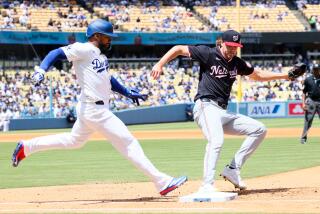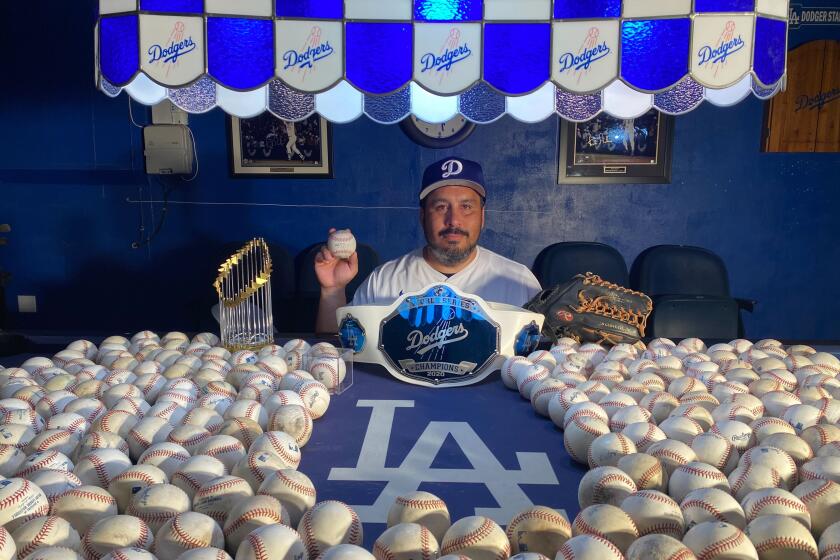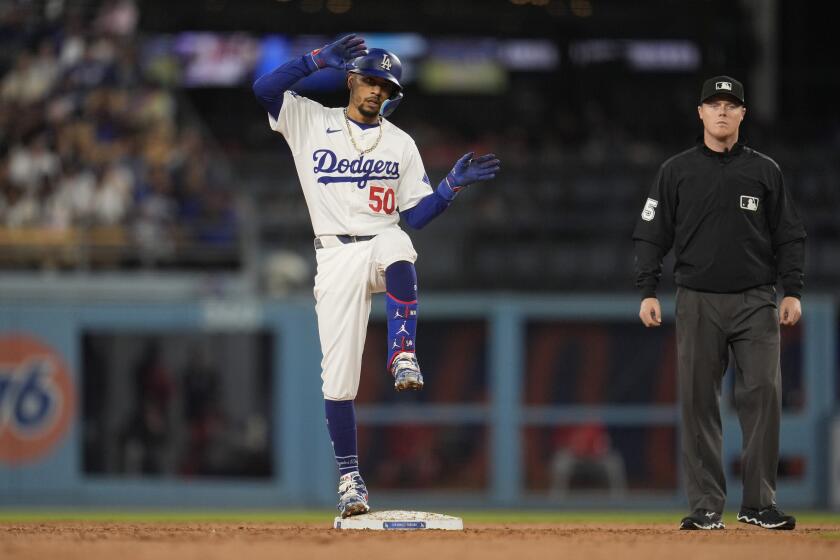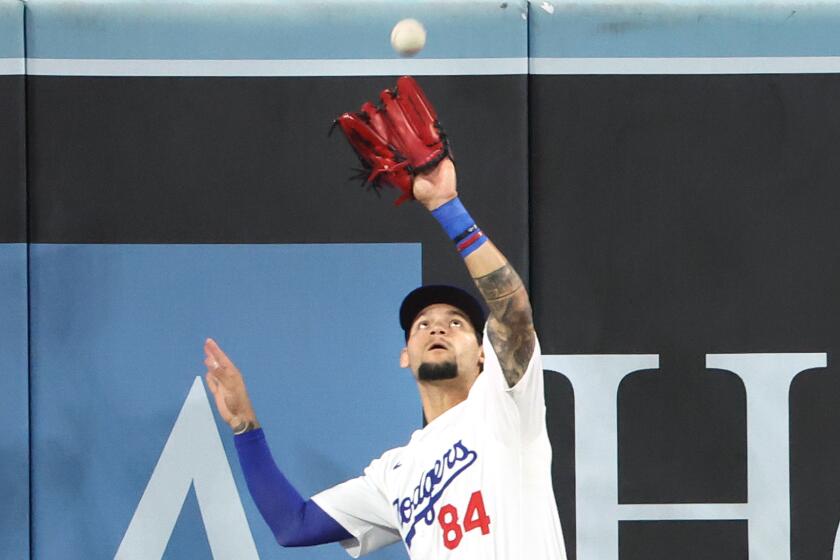Unsatisfied with All-Star rookie season, Corey Seager is hungry for more in 2017
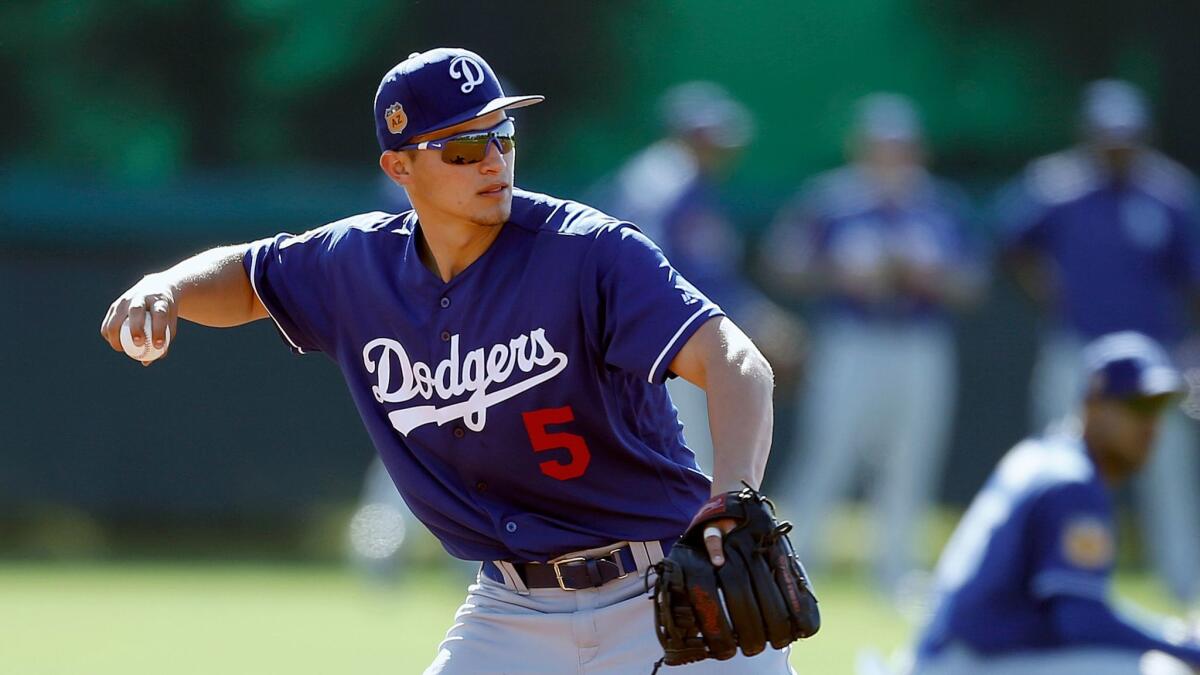
Corey Seager stepped to the counter at a Panera Bread near the Dodgers complex at Camelback Ranch earlier this week and ordered his Bacon Turkey Bravo with a cup of broccoli and cheddar soup. The order was to go, but still he could not avoid the onward creep of fame.
Out of the corner of his eye, Seager noticed someone studying him. The man did a double take, then a triple take, then checked his phone to be sure.
“And you’re sitting there like, ‘Here it comes,’ ” Seager said. “They ask you your name, and you’re like, I’m not just going to make up a name.”
His tone conveyed the weariness of an introverted 22-year-old still bewildered by his increasing lack of privacy. He must learn to handle more recognition as he tries to vault the bar he set last year. Despite the plaudits he received for his rookie season, Seager left unsatisfied with his own performance and unsatisfied with a second-round playoff exit.
By any measurement, Seager made the transition from prospect to superstar look seamless in 2016. He hit 26 home runs and silenced questions about his reliability at shortstop. He made the All-Star team and indulged in the Home Run Derby. He finished third in the National League MVP balloting and was a unanimous choice as National League Rookie of the Year.
Beneath the surface, though, Seager was discontent. Early in the season, he fumbled in search of a daily routine. By the end, he felt exhausted and frazzled. Along the way, “more often than I would have liked,” he said, his swing did not cooperate with his will.
“I was obviously comfortable,” Seager said. “There was obviously success. But it wasn’t what I ideally would have wanted.”
During the winter, Seager told Manager Dave Roberts he never had his “A-swing” in 2016. The revelation amused Roberts, hitting coach Turner Ward and anyone else who heard about it. Justin Turner wore a sizable grin when a reporter mentioned the anecdote.
“I heard that,” third baseman Justin Turner said. “I mean, I’m excited. I can’t wait to see what this ‘A-swing’ looks like.”
As Turner spoke, Seager walked into the clubhouse.
“Here he comes,” Turner said. “I’m not going to say anything. He’ll get mad at me.”
Seager insisted he was not trying to be boastful, or to insinuate, “I’m going to hit .700,” he said. The Dodgers would happily settle for a reprise of 2016, when he ranked fifth among all position players in wins above replacement, according to FanGraphs. Seager seeks more.
In search of progress, he tinkered with his swing this winter with guidance from Dodgers triple-A hitting coach Shawn Wooten. He modified his workouts to improve his flexibility and prepare his body for handling a 155-game assignment. He embraced the daily preparation he absorbed by watching veteran teammate Chase Utley.
The process started last summer. Seeking consistency in the majors, Seager observed Utley’s patterns before and after games. He picked Utley’s brain in hopes of developing habits of his own.
“For all guys, especially young guys, you can get lost in what you’re here for,” Utley said. “And that’s to win. Guys are excited to get to the big leagues. That’s the ultimate goal. And then you’re there and you’re not really sure how to go about things.”
In his youth, Utley too required guidance. The Phillies promoted him to the majors in 2003. He was 24, and unaware how to manage his time. One day, his teammate Pat Burrell approached.
“I’m picking you up tomorrow at noon,” Burrell told him. “Be ready.”
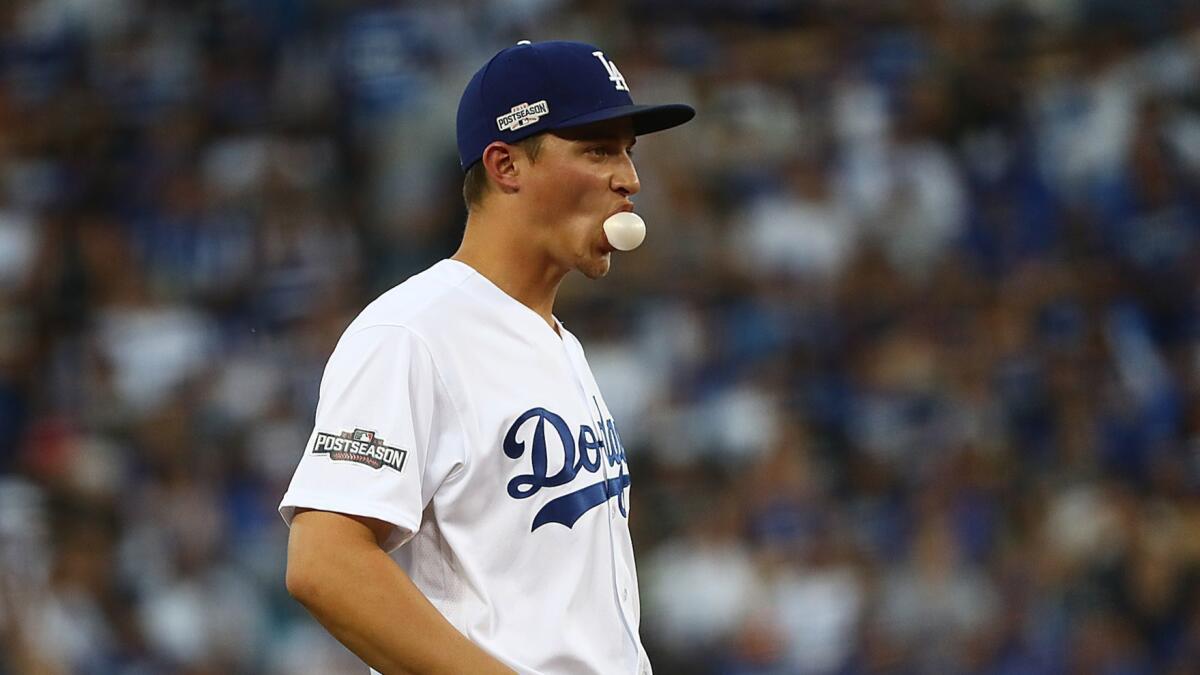
Utley became Burrell’s shadow. He trailed him around the clubhouse, the weight room and the trainer’s room. “I credit him for pointing me in the right direction,” Utley said.
Utley took a less paternalistic approach with Seager. He answered questions when asked and otherwise offered explanations with his own behavior. Seager realized he felt better when he fired his muscles with band work in the weight room hours before he took the field. He liked having activities to occupy his mind. He started to hammer out a schedule that he treated as mandatory. “It’s got to be done,” he said.
The routine has continued this spring. Seager does not dawdle near his locker in the morning. The Dodgers open their clubhouse to the media at 8 a.m. and close the doors an hour later. Seager and Utley often enter the room a few minutes before 9 a.m., acting like dueling alarm clocks that suggest time is up for reporters.
By then, Seager has already dedicated a significant portion of his morning toward activating his body. When the Dodgers drafted him in 2012, many evaluators believed he could not play shortstop in the majors given his 6-foot-4 frame. Seager refuted that notion in 2016. But he still felt fatigued.
After a scorching summer, Seager saw his on-base plus slugging percentage sink to a more pedestrian .739 in September. He still finished the season with a team-best .877 OPS, but he batted .200 in the playoffs, with no extra-base hits in the National League Championship Series. On multiple occasions, the television cameras captured him wincing near second base. Seager insisted, both then and now, that he was not hurting. He was just tired.
In his winter workouts, Seager prioritized pliability. He wanted to feel limber when he bent to make plays at second base or stretched for groundballs.
Seager also aimed to improve his performance against left-handed pitchers. He batted .250 against them with a .722 OPS – a respectable result that fell short of his standards. During hitting sessions this winter with his two ball-playing brothers, Seager filmed himself and sent clips to Wooten, who coached him in double-A and triple-A.
Wooten studied the video two or three times a week. In a quest to pounce on fastballs from left-handers, Seager had often failed to maintain the structural integrity of his swing. Wooten counseled Seager to maintain the balance, not open up his hips too early and allow the baseball to travel deeper into the strike zone before reacting.
“He’s a great hitter, there’s no doubt about it,” said Wooten, who will serve as the hitting coach in Oklahoma City this season while also aiding the big-league staff as an assistant of hitting coach Turner Ward. “It’s not like you’re taking a guy who was never a good hitter, and you’re like, ‘Oh my God, it’s a revelation.’ He just felt, and I felt, like he can improve in that area. And that’s one area that he prides himself on.”
An unsatisfied Corey Seager, encouraged by his success and motivated by his perceived failures, does not bode well for the pitchers of the National League. It also does not bode well for his interest in privacy away from the diamond. It is the toll he must pay for his talent. He is learning to deal with it.
“The thing that separates Corey from a lot of players is that, at a young age, he eliminates the noise,” Roberts said. “He goes out there and tries to put his best at-bat forward every night and every time he steps in the box. That’s why he’s a productive player.”
Twitter: @McCulloughTimes
More to Read
Are you a true-blue fan?
Get our Dodgers Dugout newsletter for insights, news and much more.
You may occasionally receive promotional content from the Los Angeles Times.
